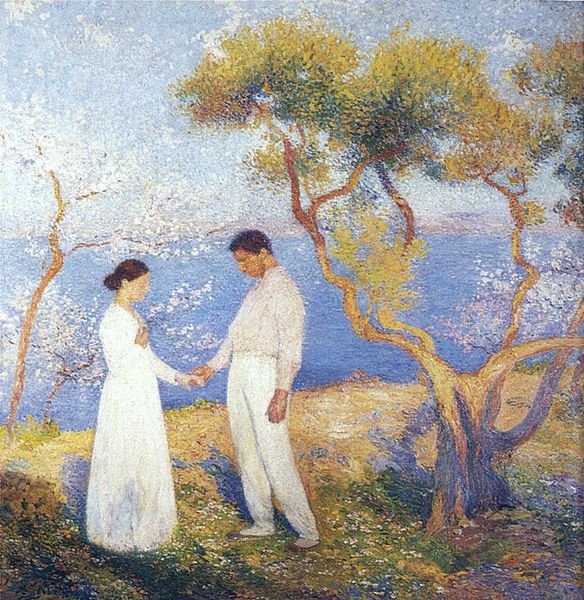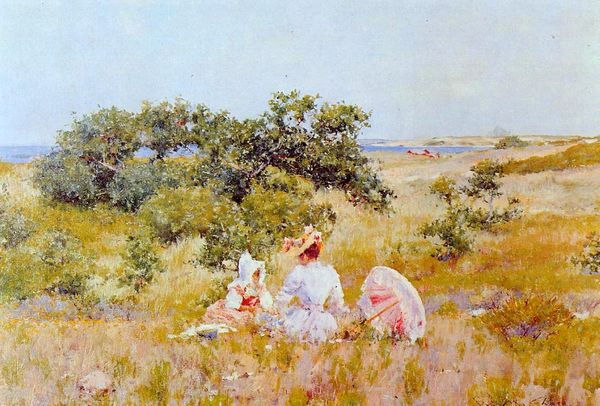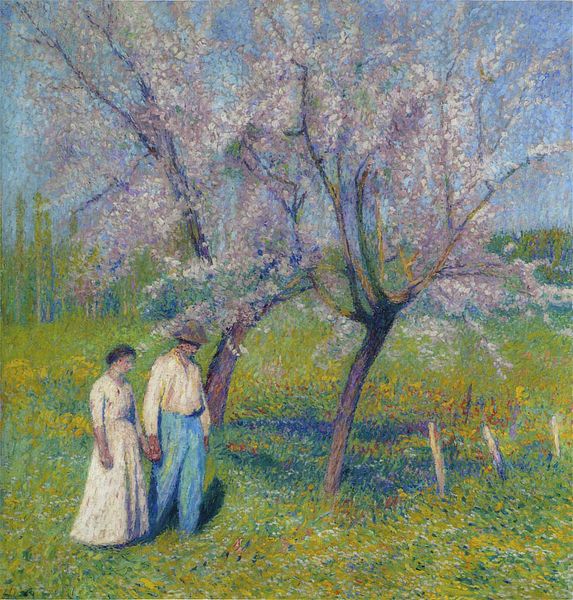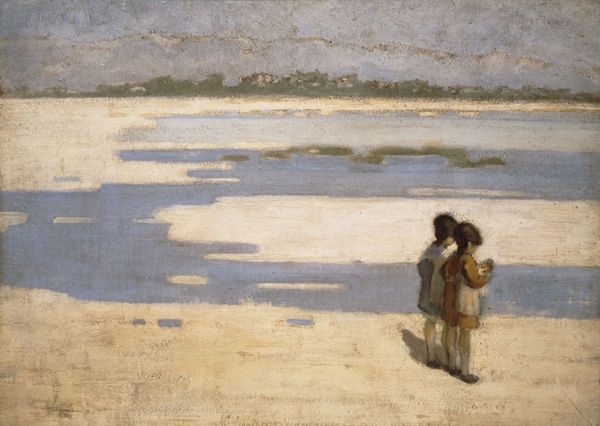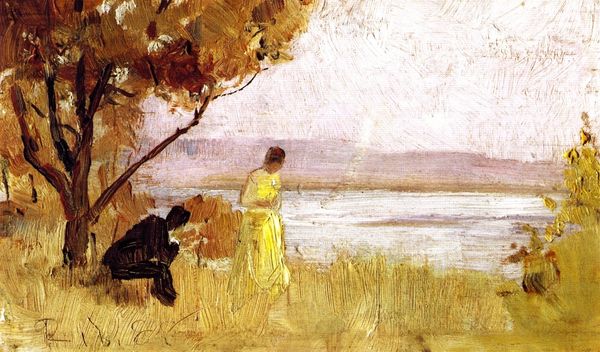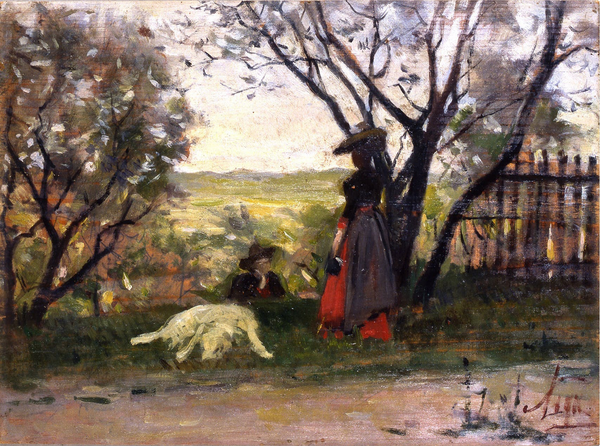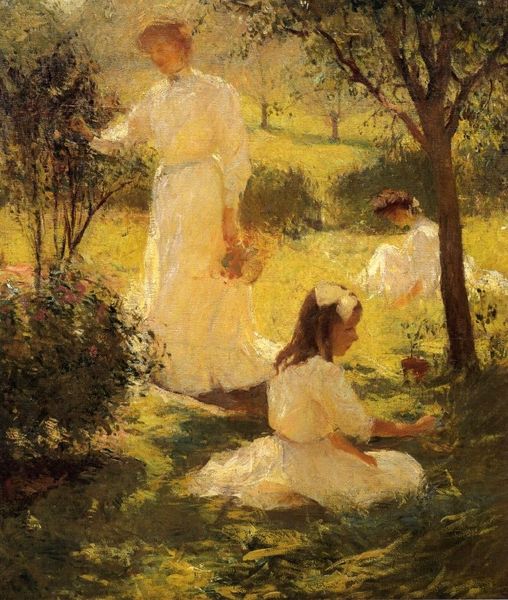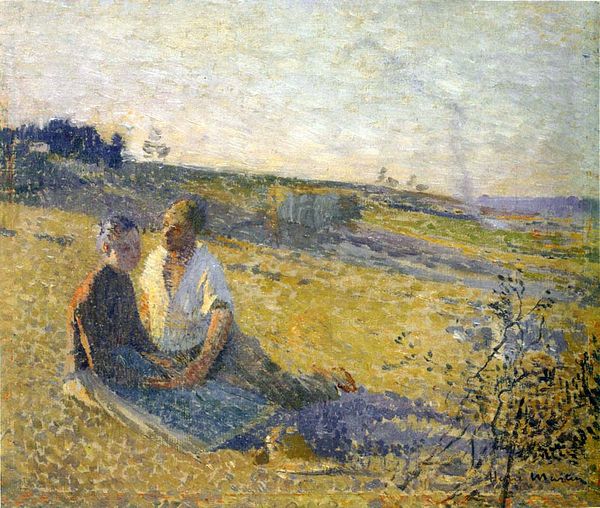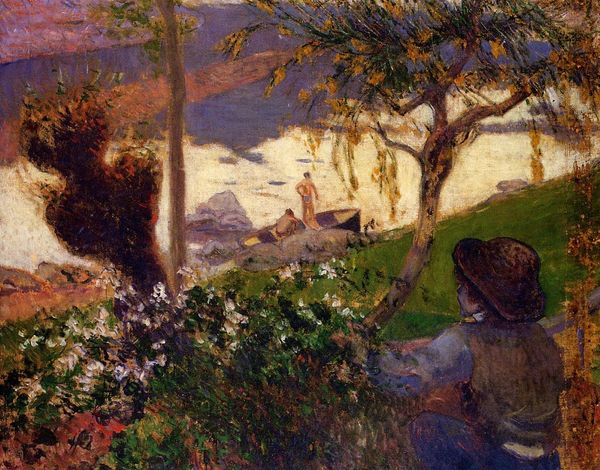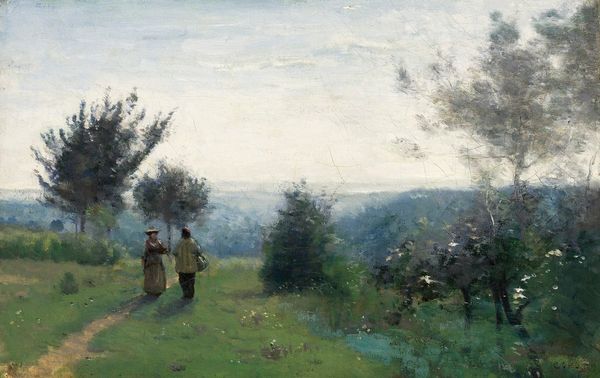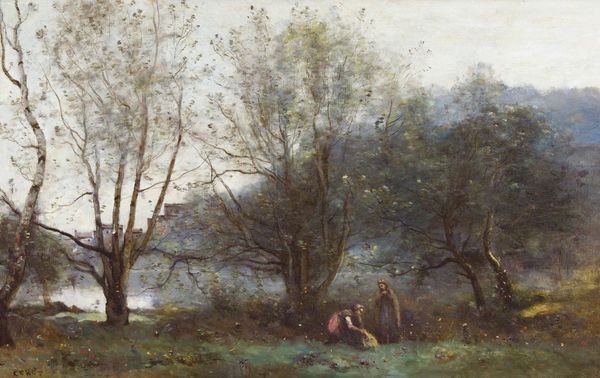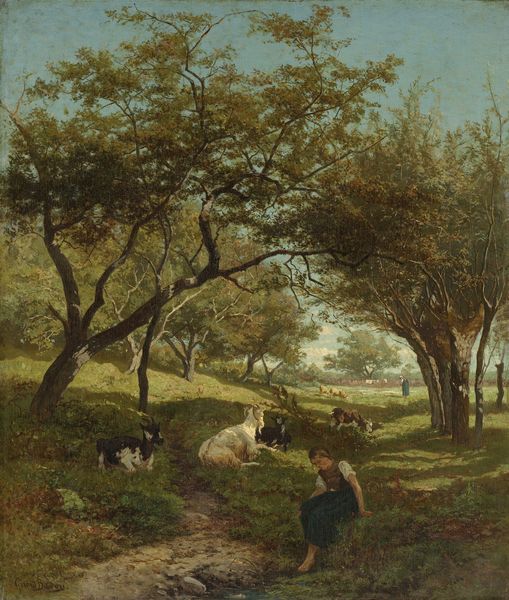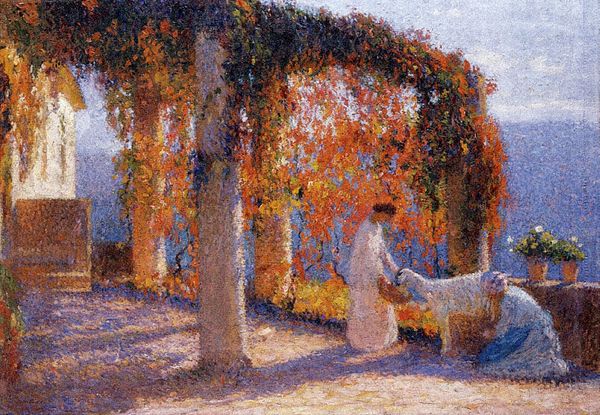
plein-air, oil-paint
#
animal
#
impressionism
#
plein-air
#
oil-paint
#
landscape
#
impressionist landscape
#
figuration
#
oil painting
#
genre-painting
#
watercolor
Copyright: Public domain
Editor: Here we have "Landscape with the Goat" by Henri Martin, created with oil paint. It's such a peaceful, almost idyllic scene, isn’t it? The dappled light and the leisurely pace of life feel very calming. What catches your eye when you look at this piece? Curator: The image, with its depiction of rural life, needs to be understood within its historical context. Late 19th and early 20th century France was grappling with rapid industrialization. Artists like Martin often turned to rural settings as a form of social commentary. He's idealizing the agrarian life. Note the figures are anonymous; it emphasizes a type, not a specific person. Why do you think he chooses to present the scene this way? Editor: Perhaps to make it a universal experience rather than a portrait of individuals? The people in the field embody an existence in harmony with nature. Curator: Precisely. There's a political dimension, though often subtle, in these landscape paintings. The choice of subject, the emphasis on the peasant class, speaks to anxieties about modernity and its impact on traditional social structures. The Impressionist style also contributes. Think about its emphasis on individual perception and direct experience of nature, outside academic traditions. Do you see this rejection of academic styles here? Editor: Definitely. It feels immediate and unfiltered, like a personal experience rather than a staged narrative. All those soft pastel hues are soothing to behold, a respite from urban reality. I hadn't thought about it as a commentary, though, just pure visual pleasure. Curator: That's the interesting paradox, isn’t it? A beautiful image can simultaneously serve a deeper cultural function, reflecting and shaping perceptions of social change. Looking at paintings like these really underlines the complex relationship between art, politics and society. Editor: This definitely shifts my perspective, makes me consider the broader implications and cultural meanings of landscape paintings in that era. It's made me consider what appears to be simple, often conveys multiple layers of complex social commentary. Thanks!
Comments
No comments
Be the first to comment and join the conversation on the ultimate creative platform.
